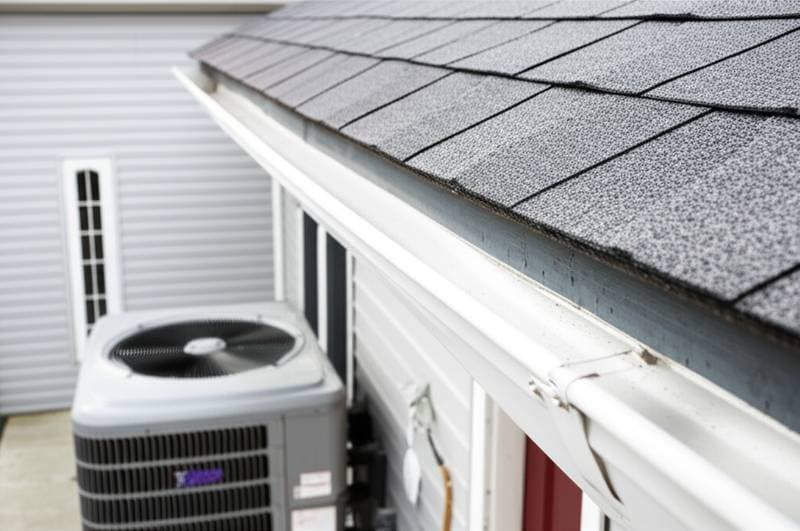Understanding Thermal Imaging for Moisture Detection
Rising costs in home renovations stem from undetected moisture issues as much as economic factors. Water infiltration behind walls or beneath floors often escapes notice until significant damage occurs. A personal encounter with a concealed bathroom leak highlighted the urgency of proactive measures; by the time odors emerged, mold had compromised the area. Thermal imaging now serves as a reliable method to identify such risks early.
This approach empowers homeowners to address problems before they escalate. Professionals and DIY enthusiasts alike rely on it to preserve property value and health. The following sections detail its benefits, applications, and implementation strategies.
The Impact of Undetected Moisture on Homes
Moisture acts as a gradual adversary to residential structures. It compromises drywall integrity, causes flooring to buckle, and fosters mold that deteriorates indoor air quality. These effects extend to electrical systems and wooden frameworks, leading to extensive repairs if ignored.
Detection proves challenging because water conceals itself within cavities or insulation layers. Standard tools, such as handheld moisture meters, limit assessments to visible surfaces and small zones. Consequently, issues persist undetected, allowing damage to compound over time.
Thermal imaging overcomes these limitations through infrared technology. Cameras capture surface temperature variations, where damp areas appear distinct due to altered heat retention. A uniform wall might display irregular patterns on the screen, indicating potential water presence. This visual cue prompts further investigation, preventing widespread deterioration.
Homeowners benefit from early alerts that align with seasonal vulnerabilities, like roof leaks after heavy rains. Regular use integrates seamlessly into property upkeep, reducing long-term expenses.
Evaluating Thermal Imaging Options: DIY Versus Professional Services
Individuals familiar with technology may opt for a personal thermal imaging device. Entry-level models start at around 200 dollars and suit basic scans of windows, attics, and basements. These tools provide immediate feedback, allowing users to monitor high-risk areas independently.
Effective use requires understanding image interpretation. Temperature differentials can arise from moisture, drafts, or insulation gaps; distinguishing these demands practice. Beginners should consult manufacturer guides or online tutorials to refine skills. For instance, scan during stable indoor conditions to minimize false readings from external temperature swings.
Professional inspections offer precision for complex scenarios. Certified technicians employ advanced cameras alongside complementary tools like hygrometers and borescopes. They assess plumbing, heating systems, and large properties comprehensively, delivering detailed reports with remediation recommendations.
Costs for professional services range from 300 to 800 dollars, depending on home size and scope. To secure competitive rates, obtain quotes from at least three local experts. This step ensures selection of qualified providers with relevant certifications, such as those from the International Association of Certified Home Inspectors.
Key Considerations for Choosing an Approach
- Assess your technical comfort level and the inspection's scale.
- Budget for equipment if pursuing DIY, factoring in battery life and resolution quality.
- Prioritize professionals for electrical or structural concerns to avoid safety risks.
- Review past client feedback to gauge reliability.
- Schedule during dry weather for accurate baseline readings.
Integrating Thermal Imaging into Routine Home Care
View thermal imaging as an ongoing safeguard rather than a singular event. Annual inspections align with standard maintenance cycles, catching minor issues like pipe condensation before they evolve. This practice extends to pre-purchase home evaluations, informing negotiations and preparations.
Document each scan with photographs and notes on anomalies. Address findings promptly through targeted repairs, such as sealing cracks or improving ventilation. Track progress with follow-up images to verify effectiveness.
Beyond leak detection, apply the technology to energy audits. Identify heat loss points to enhance efficiency and lower utility bills. Combine with dehumidifiers in damp zones to maintain optimal humidity levels below 60 percent.
Homeowners who adopt this method report fewer surprise repairs and improved living conditions. Mold prevention preserves not only materials but also family well-being by curbing allergens and respiratory irritants.
Long-Term Strategies for Moisture Management
Establish a comprehensive plan that incorporates thermal imaging with preventive habits. Install vapor barriers in crawl spaces and ensure proper grading around foundations to divert water. These measures complement scans by reducing moisture entry points.
Educate household members on signs of trouble, such as unexplained humidity or discoloration. Quick responses minimize escalation, preserving the home's aesthetic and functional value.
Investing in this technology yields tangible returns through avoided catastrophes. Homes remain resilient, budgets stay intact, and occupants enjoy healthier environments. Proactive detection transforms potential disasters into manageable tasks.


